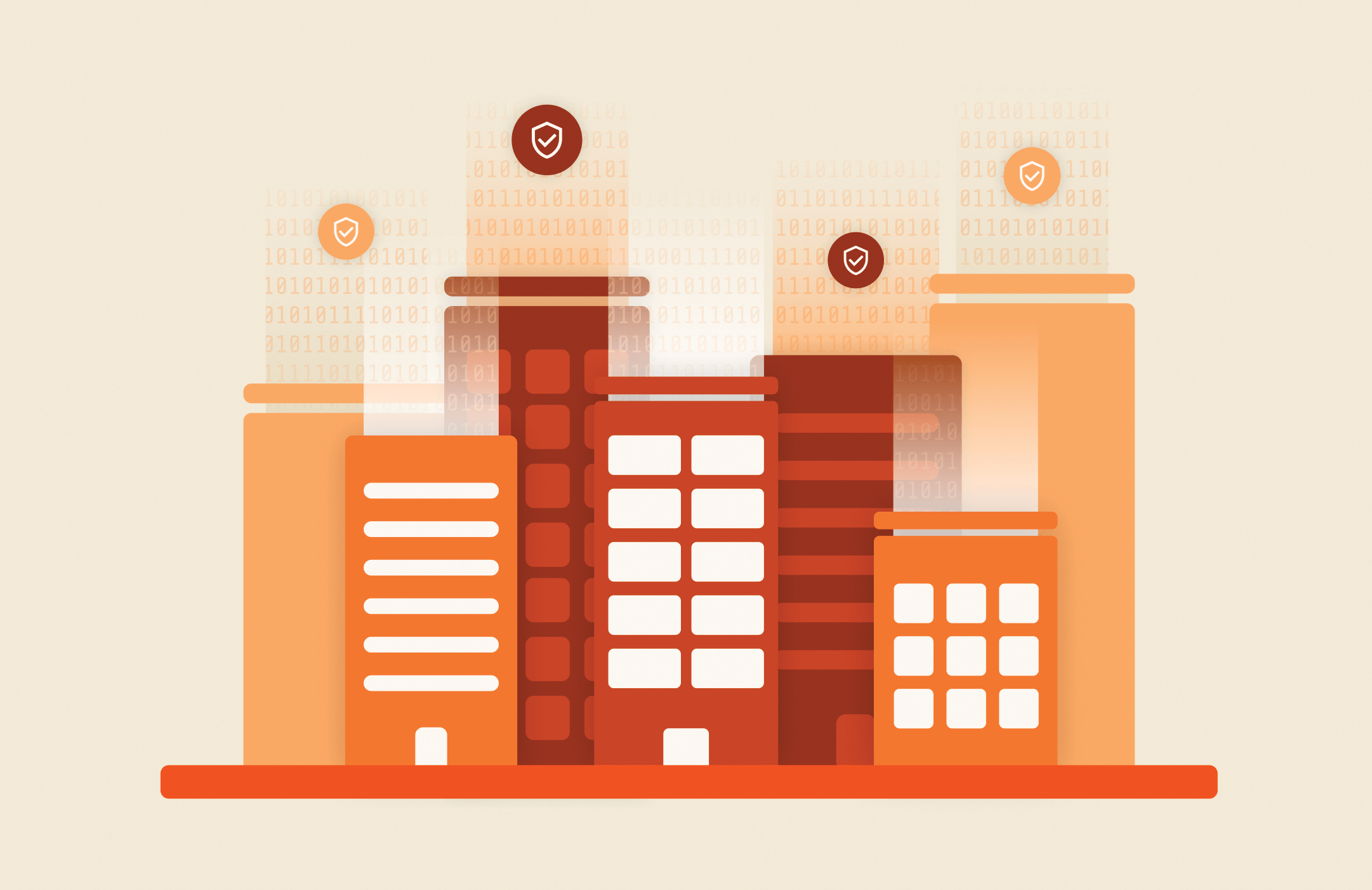We think of cities as being powered by people, transportation, energy, and buildings—the things we can see with our own eyes as we move around a bustling metropolis. But today, data is the “fuel” powering what’s known as a “smart city”: one that uses technology and information to improve city services and meet goals for sustainability, public health, and city planning.
Smart cities are often large—like Busan, South Korea, which is working to build its ideal smart city from the ground up. They can also be small, like LaGrange, Georgia, a community of 30,000 people that is positioning itself as a smart city to diversify the local economy.
No matter their size, smart cities have one thing in common: reliance on data to drive decisions and improve the lives of citizens. Below, we share some of the ways cities are using data today and some of the risks associated with collecting and managing city data.
Smart City Data Trends
Building Healthcare Ecosystems
The pandemic has thrown the need for improved public health services into sharp focus. Cities like Chicago are examining ways to prevent sickness and injuries by focusing on well-being and prevention programs, in part by gathering data about health outcomes and program delivery methods, according to Deloitte.
Data program must-have: Methods for assuring data accuracy, compliance and privacy, and a strong security infrastructure.
Closing the Digital Divide
Digital equity—that is, improving underserved communities’ access to digital tools like broadband internet and wifi—plays a key role in citizens’ well-being and success. As Smart Cities Dive reports, “We expect that data teams who’ve focused on outreach efforts to assist residents in understanding the benefits of wearing masks and getting vaccinated will leverage the lessons they have learned to create new outreach efforts to expand broadband access, broadband subsidies for low-income users, online literacy programs, and other digital equity efforts.”
Data program must-have: Rapid and reliable access to shared, open-government data sources.
Tapping the Wealth of Data from IoT Devices
Investment in IoT technology is exploding in cities looking to become smarter and more efficient by gathering data. Market research firm MarketsandMarkets forecasts that the IoT in smart cities market will grow to $312.2 billion by 2026. By capturing and analyzing IoT data, cities can do everything from improving traffic patterns and boosting sustainability to reducing crime.
Data program must-have: High-capacity storage that can scale and consolidate both structured data and unstructured sensor data.
Creating Digital Twins
Digital twins are virtual representations of objects or systems—like an office building or an HVAC system. The purpose of a smart city digital twin is to help city leaders make decisions, often by using data and machine learning to generate possible outcomes of these decisions. Digital twins are hot: VentureBeat named them one of the top trends for 2022.
Data program must-have: High-performance computing capabilities, such as machine learning, AI, and high-speed analytics capabilities to test, validate, and verify.
Improving Sustainability
Data is already helping cities reach sustainability goals and improve life and health for citizens. In Mountain View, California, city leaders study sensor data on traffic stress, transit demand, and traffic patterns to come up with ideas for improving walkability and public transit options. In Miami, data is being used to inform resiliency plans, map coastline changes, and identify energy use patterns.
Data program must-have: A thorough ESG baseline to work toward smaller data center footprints and more efficient storage that scales volume, not resources required.
How to Address Smart City Data Risks
If security events and outages can cause enterprises to come to a grinding halt—what about a city that’s running on data? It’s a big question, but one that can be addressed with the following safeguards and best practices.
Cybersecurity Protections for Data
If smart cities are to rely on data, security must be built into data storage from the start. “From ransomware attacks on school systems and hospitals to threats on critical infrastructure, state and local IT leaders are under immense pressure to build strong cyber defenses against bad actors,” says Mike Wiseman, vice president of public sector at Pure Storage. “Organizations should focus on data protection, including backing up systems routinely, reinforcing basic cybersecurity awareness and education, and revisiting cyber incident response plans often.”
Data-drill Disaster Planning
Many cities’ emergency forces conduct rehearsals for disasters like fires or mass injuries. But there is newfound awareness of the need to plan for data access in case of emergencies—anything from a catastrophic flood to a ransomware attack.
In the aftermath of Hurricane Sandy in 2012, New York City emergency management officials realized there were flaws in the city’s data infrastructure. In response, the city began data drills to stress-test the strength of data protocols in case of emergencies.
Leaning on the Power of AI
Ransomware attackers love city data systems. There’s nothing like paralyzing a city’s accounting or services systems to force a ransom payment. IoT devices, which help cities monitor services like trash pickup and traffic lights, are a particularly lucrative target. With artificial intelligence (AI), cities can identify unusual activity within data storage systems and alert IT leaders who can determine if the activity could be the result of a hack. “From this ever-evolving understanding of a city’s unique digital ecosystem, the AI is able to autonomously identify and respond to malicious activity the moment it transpires—even novel threats previously unknown to the security community,” reports Dark Reading.
Strict Data Privacy Processes
Cities’ collection of data hasn’t escaped the notice of citizens, who are concerned about how that data might be used and the consequences of data exposure. The onus is on cities to demand that their data vendors are carefully managing data privacy.
“Cities must also use their leverage to assert themselves as market makers and demand that technology companies respect the public’s privacy,” writes Ben Smith, author of The Smart Enough City: Putting Technology in Its Place to Reclaim Our Urban Future. “Municipalities may also be able to emphasize privacy as a condition of a company operating its services in the city, for example, by adopting privacy requirements that any company seeking a permit must abide by.”
How Emerging Smart Cities Are Leveraging Data with Pure
At Pure, we know that the “smart” in smart cities rests in data, which is why we’re passionate about ensuring municipalities gain intelligence and inspiration from data while also keeping it safe and secure. In Davenport, Iowa, the city is using FlashBlade® to consolidate complex data silos.
Pure Storage FlashBlade offers a unified fast file and object (UFFO) storage platform that consolidates data silos and accelerates delivery, insight, and innovation. From artificial intelligence to analytics to rapid restore, FlashBlade is the industry’s most advanced scale-out storage designed for modern infrastructure demands.
![]() From Smart Cities to an Entire Smart Island
From Smart Cities to an Entire Smart Island

Pure Storage Business White Paper
What Do AI Projects Really Demand from IT?
An AI primer for business leaders







